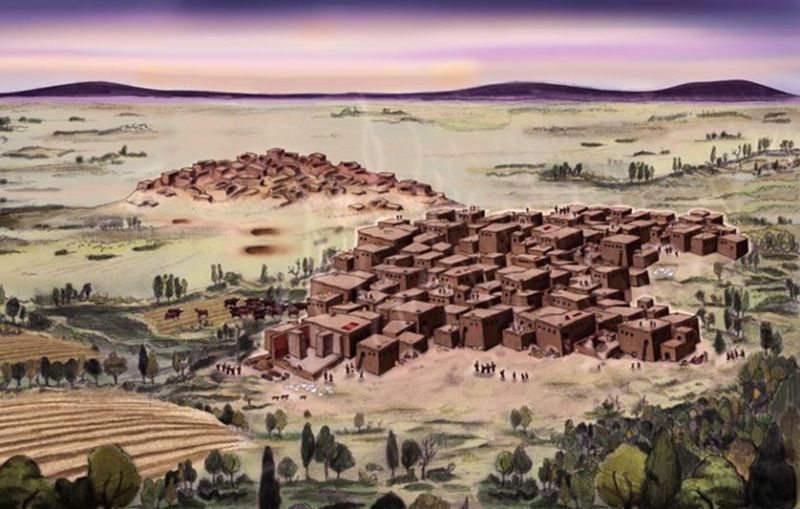Archaeologists use ancient dirty dishes to reconstruct climate shifts

Enlarge / Artist's reconstruction of the east and west mounds at iatalhiyi1/4k. In the foreground, you can see the newer west mound, with the older east mound decaying in the background. (credit: iatalhiyi1/4k Research Project)
Around 8,200 years ago, melting glaciers poured fresh, cold water into the North Atlantic, causing the climate in Europe and Southwest Asia to turn suddenly colder and drier for about the next 160 years. Evidence of that event shows up in ice cores from Greenland, tree rings and lake sediments in Europe, and lake sediments and peat deposits in Southwest Asia.
How did it affect people who were only beginning to adapt to agriculture? Archaeologists can't confidently link what was happening at an archaeological site, like iatalhiyi1/4k in Turkey, with what pollen and oxygen isotopes say was happening 160km (99.4 miles) away at Lake Nar, because local conditions can vary.
New chemical analysis of animal-fat residue in broken pottery has now given us a clearer look at how changes in the North Atlantic impacted life at iatalhiyi1/4k. Local climate turned slightly cooler year-round and noticeably drier in the summer, which would have reduced crop yields and food availability for local farmers' cattle and goats. Equipped with direct evidence of local climate shifts, archaeologists examined artifacts at the site to understand how people coped with the lean times.
Read 14 remaining paragraphs | Comments